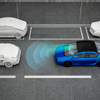Driver models play a vital role in developing and verifying autonomous vehicles (AVs). Previously, they are mainly applied in traffic flow simulation to model realistic driver behavior. With the development of AVs, driver models attract much attention again due to their potential contributions to AV certification. The simulation-based testing method is considered an effective measure to accelerate AV testing due to its safe and efficient characteristics. Nonetheless, realistic driver models are prerequisites for valid simulation results. Additionally, an AV is assumed to be at least as safe as a careful and competent driver. Therefore, driver models are inevitable for AV safety assessment. However, no comparison or discussion of driver models is available regarding their utility to AVs in the last five years despite their necessities in the release of AVs. This motivates us to present a comprehensive survey of driver models in the paper and compare their applicability. Requirements for driver models in terms of their application to AV safety assessment are discussed. A summary of driver models for simulation-based testing and AV certification is provided. Evaluation metrics are defined to compare their strength and weakness. Finally, an architecture for a careful and competent driver model is proposed. Challenges and future work are elaborated. This study gives related researchers especially regulators an overview and helps them to define appropriate driver models for AVs.
翻译:驾驶员模型在开发和验证自动驾驶汽车(AVs)中起着至关重要的作用。以前,它们主要应用于交通流仿真中,以模拟真实的驾驶员行为。随着AVs的发展,驾驶员模型再次受到关注,因为它们对AV认证的潜在贡献。基于仿真的测试方法被认为是加速AV测试的有效措施,因为它具有安全和高效的特点。然而,对于有效的仿真结果,真实的驾驶员模型是必要的前提条件。此外,假定AV至少和谨慎和能干的驾驶员一样安全。因此,驾驶员模型在AV安全评估中是不可避免的。然而,在过去五年中,就它们在AVs中的实用性没有进行比较或讨论,尽管它们在发布AVs时是必要的。这促使我们在本文中对驾驶员模型进行全面调查并比较其适用性。讨论了在AV安全评估中驾驶员模型方面的要求。提供了基于仿真的测试和AV认证的驾驶员模型概述。定义评估指标来比较它们的优势和劣势。最后,提出了一个谨慎和能干的驾驶员模型的架构。阐述了挑战和未来工作。本研究为相关研究者特别是监管机构提供了一个概述,并帮助他们为AVs定义适当的驾驶员模型。



